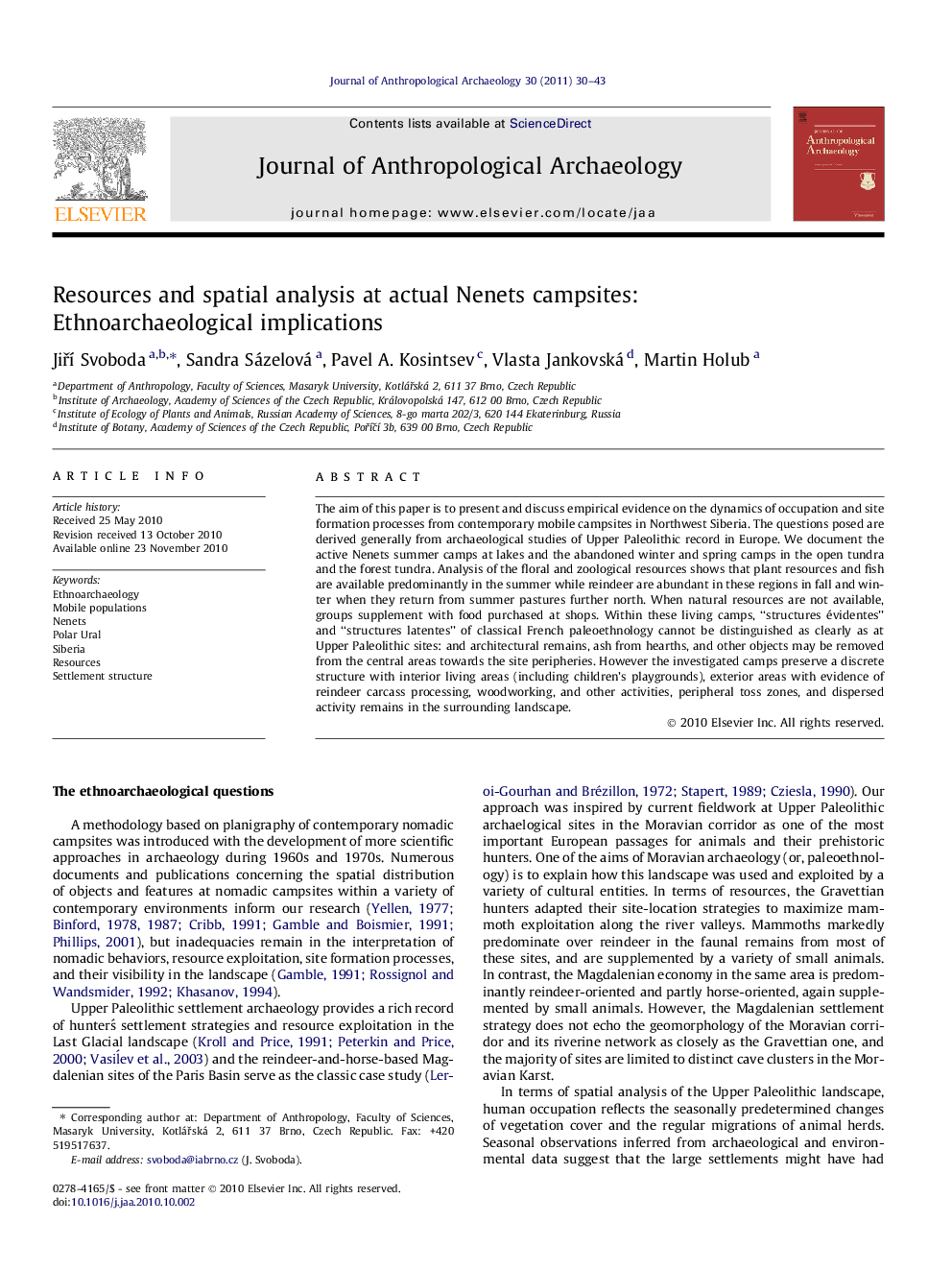| Article ID | Journal | Published Year | Pages | File Type |
|---|---|---|---|---|
| 1035056 | Journal of Anthropological Archaeology | 2011 | 14 Pages |
The aim of this paper is to present and discuss empirical evidence on the dynamics of occupation and site formation processes from contemporary mobile campsites in Northwest Siberia. The questions posed are derived generally from archaeological studies of Upper Paleolithic record in Europe. We document the active Nenets summer camps at lakes and the abandoned winter and spring camps in the open tundra and the forest tundra. Analysis of the floral and zoological resources shows that plant resources and fish are available predominantly in the summer while reindeer are abundant in these regions in fall and winter when they return from summer pastures further north. When natural resources are not available, groups supplement with food purchased at shops. Within these living camps, “structures évidentes” and “structures latentes” of classical French paleoethnology cannot be distinguished as clearly as at Upper Paleolithic sites: and architectural remains, ash from hearths, and other objects may be removed from the central areas towards the site peripheries. However the investigated camps preserve a discrete structure with interior living areas (including children’s playgrounds), exterior areas with evidence of reindeer carcass processing, woodworking, and other activities, peripheral toss zones, and dispersed activity remains in the surrounding landscape.
Research highlights► Active and abandoned Nenets camps (NW Siberia) in tundra were documented. ► A camp structure with interior living areas, exterior activity areas, and peripheral toss zones was recorded. ► A tendency exists to remove objects from the central areas towards peripheries. ► Ethnoarchaeological implications are discussed.
